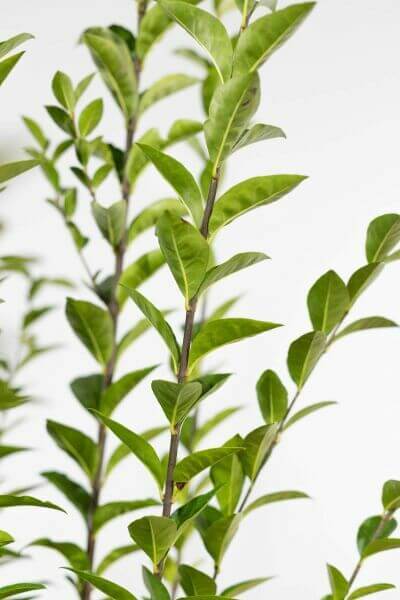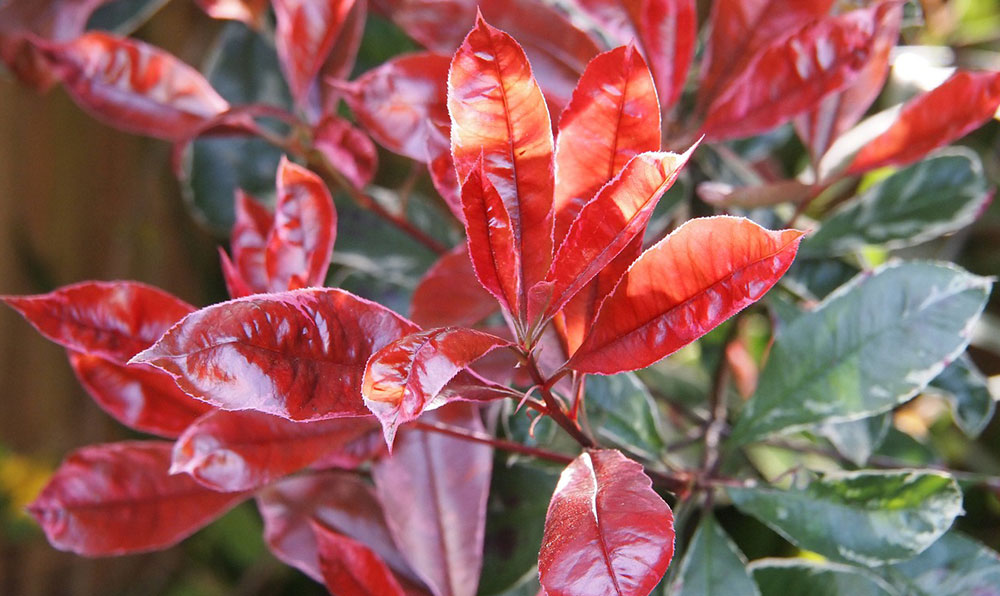Best Hedging Plants For Informal Landscaping
Boost your garden's allure with rich hedge varieties such as Yew (Taxus), Thuja, Laurel, Photinia, and Bamboo, celebrated for their structural stability and ecological advantages.
Yew and Thuja supply evergreen protection and winter season durability, while Laurel uses fast development and broad, fragrant leaves.
Photinia includes seasonal beauty with its vibrant red foliage, and Bamboo provides a low-maintenance, tranquil ambiance.
These hedges enhance air quality, lower noise, and create tranquil, personal areas.
Proper planting, spacing, and upkeep make sure vigorous growth and eco-friendly harmony.
Explore how these rich ranges can raise your garden's beauty and well-being.
Secret Takeaways
Change Your Garden With Lush Hedge Ranges
- Select Yew for its thick, evergreen growth and exceptional durability.
- Go with Laurel for its fast growth and broad leaves, making sure quick privacy.
- Select Photinia for its dynamic seasonal foliage, which turns a striking dark red.
- Use Bamboo for a low-maintenance, winter-hardy hedge with aesthetic appeal.
- Space plants 2-3 per meter and prune routinely for ideal growth and health.
Popular Hedge Plants
When transforming a garden with lavish hedge ranges, it's necessary to consider popular hedge plants such as Yew, Thuja, Laurel, and Photinia due to their unique characteristics and benefits.
Yew (Taxus) is highly esteemed for its longevity and dense, green growth, making it a prime choice for enduring landscapes.
Thuja is noted for its evergreen foliage and robust winter durability.
Photinia adds seasonal vibrancy with red leaves that darken gradually, producing vibrant visual appeal.
Laurel provides fast growth and fragrant, broad leaves, ideal for fast privacy.
Additionally, Bamboo is an outstanding choice for atmosphere, using a low-maintenance, winter-hardy alternative that improves the garden's aesthetic with its stylish, swaying canes.
These selections deal with a range of horticultural needs and preferences.
Advantages of Garden Hedges
Garden hedges provide a wide variety of benefits, making them an important addition to any landscape. These natural barriers are cost-efficient to execute and provide significant wind protection, improving air circulation and adding to sound reduction. The thick foliage of hedges like Thuja and Beech ensures privacy by blocking visibility, developing a remote and serene environment.
Hedges likewise play an important role in microclimate guideline, providing a steady environment that fosters plant development and reduces temperature level variations. Their intricate leaf structures filter toxins, enhancing air quality and contributing to a much healthier garden community.
Additionally, hedges excel in noise reduction, taking in and deflecting acoustic waves to lower ambient noise levels. This double functionality of supplying both visual and acoustic personal privacy enhances the total tranquility and aesthetic appeal of any garden.
Planting and Upkeep Tips
For a successful hedge, precise preparation of the planting location is essential. Guarantee the soil has correct pH and drainage to support strong root development.
Area the plants properly for the chosen species. Water the hedge regularly throughout its initial growth stage, changing as required with seasonal changes.
Execute a methodical bug control and disease prevention technique, utilizing chemical or natural treatments when required. Routinely examine for aphids, mites, and fungal infections.
Apply mulch to keep moisture and reduce weeds. Seasonal pruning promotes thick development and air flow, necessary for plant health.
Following these guidelines will help you cultivate a lively, well-kept hedge that enhances the charm of your garden.
Spacing and Cutting Standards
Spacing and Trimming Guidelines
Appropriate spacing and cutting are important for cultivating healthy, aesthetically appealing hedges. Adequate spacing ensures each plant receives sufficient nutrients, light, and airflow.
Follow these guidelines for optimal hedge maintenance:
- Spacing: Position hedge plants 2-3 plants per meter to encourage robust development.
- Pruning Strategies: Routine pruning is vital for maintaining desired hedge height and shape. Trim brand-new development in summer season and cut down older wood throughout winter.
- Seasonal Care: Adjust trimming schedules and approaches according to seasonal requirements to ensure plant health.
- Hedge Height: Regularly screen and cut to maintain the desired hedge height and attain uniform aesthetic appeals.
Sticking to these steps will ensure your hedge thrives, boosting both the appeal and performance of your garden.
Selecting the Right Hedge
Choosing the Right Hedge
Choosing the suitable hedge includes assessing elements such as mature height, foliage density, and ecological durability. Successful hedge plant choice requires understanding each types' growth attributes and site-specific versatility.
For example, Yew (Taxus) uses outstanding durability and thick growth, while Thuja is noteworthy for its winter durability. Additionally, thinking about maintenance requirements is vital; fast-growing species like Laurel or Privet need regular cutting, whereas low-maintenance choices like Bamboo or Ivy might be preferable for those seeking very little upkeep.
Ecological factors such as soil type, light schedule, and moisture conditions must likewise direct the choice process. This mindful approach guarantees the picked hedges will flourish, supplying both practical and aesthetic benefits to the garden landscape.
Shipment and Planting Guidance
To guarantee your hedge plants grow, they should be delivered by specialized carriers and planted promptly upon arrival.
Follow these vital steps for effective planting:
- Soil Preparation: Improve the soil with raw material to improve drainage and nutrient content.
- Planting Depth: Produce a trench two times the width and equivalent to the depth of the root ball.
- Watering Methods: Water completely after planting, keeping the soil regularly wet but not saturated.
- Mulching: Apply a layer of mulch to maintain wetness and reduce weeds.
Consumer Assistance and Service
Given the essential function of timely support in horticultural pursuits, our client assistance group is available six days a week through telephone, email, and social media to provide skilled advice and quickly attend to any concerns. Their commitment to fast reaction times guarantees consumer satisfaction by dealing with queries associated with plant health, ideal planting techniques, and maintenance schedules.

check here Within 48 hours
This comprehensive support group, strengthened by an outstanding 9.3/ 10 consumer ranking, highlights our dedication to boosting the gardening experience for every client.
Regularly Asked Questions
The Length Of Time Does It Consider Hedge Plants to Develop?
Hedge plants usually need one to 3 years to end up being totally developed, with the specific period differing by types and growing conditions.
Efficient care during this vital period is important for robust growth. Consistent watering, watchful weed control, and appropriate fertilizer application are pivotal in promoting strong root development.
For instance, fast-growing types like Laurel might develop faster, while slower-growing varieties such as Yew might take longer. Thorough upkeep accelerates the establishment process, resulting in dense and healthy hedges.
What Are the Finest Hedge Plants for Privacy?
The concern of the very best hedge plants for privacy involves evaluating evergreen and deciduous choices.
Evergreen hedges like Thuja, Laurel, and Cypress provide year-round protection, guaranteeing continuous privacy.
On the other hand, deciduous hedges such as Beech provide seasonal privacy, shedding leaves in cooler months.
Secret maintenance pointers for personal privacy hedges include regular cutting, fertilizing in spring, and appropriate spacing-- generally 2 to 3 plants per meter.
In addition, constant watering and diligent weed elimination are important for promoting healthy, dense development.
Can Hedge Plants Attract Wildlife to My Garden?
Yes, hedge plants can bring in wildlife to your garden by offering essential advantages like shelter, food, and nesting sites, therefore boosting local biodiversity. Yew, holly, and laurel are exceptional for drawing in birds, while ivy supports a range of insects.
Nevertheless, it is very important to keep in mind that there are some drawbacks, such as increased upkeep to handle pests and routine upkeep. Carefully picking and maintaining hedge ranges can assist balance these advantages and downsides, ultimately promoting a lively and sustainable community in your garden.
Exist Any Flowering Hedge Plants Available?
Yes, there are flowering hedge plants offered that can boost the charm of your garden.
For instance, Elaeagnus, likewise called Olive Willow, produces fragrant white flowers in the fall, adding a touch of beauty.
Photinia, another popular option, showcases lively red leaves that mature into a rich green, developing a dynamic visual impact throughout the seasons.
To guarantee these plants grow, it's important to practice appropriate pruning methods and seasonal upkeep, such as cutting brand-new development in the summertime and cutting down in the winter season.
These measures will help maintain the health and aesthetic appeal of your flowering hedges.
How Do I Prevent Pests in My Hedge Plants?
To prevent pests in hedge plants, utilize natural insect control techniques and preserve appropriate hedge care. Present helpful pests like ladybugs, which victimize damaging bugs, to develop a well balanced environment.
Frequently check your hedges for indications of problem and quickly remove any affected parts to avoid the spread. Make sure the health of your hedges by using well balanced fertilizers and offering adequate water.
Utilize mulching to retain soil wetness and appropriate spacing to minimize plant stress and promote robust growth. These practices jointly assist in lessening insect issues and maintaining a healthy hedge.
Conclusion
In essence, picking the best hedge varieties such as Yew, Thuja, and Laurel can transform any garden into a serene sanctuary. These plants provide year-round plant, boost aesthetic appeal, and deal useful benefits like sound decrease and wind defense.
Appropriate planting methods, accurate spacing, constant watering, and seasonal trimming are vital for optimum development.
Trusted delivery services and expert consumer support make sure a seamless experience from purchase to planting, making it easier than ever to raise your outdoor area.
Garden hedges offer a plethora of benefits, making them a valuable addition to any landscape. These natural barriers are economical to implement and supply considerable wind defense, improving air blood circulation and contributing to noise decrease. The dense foliage of hedges like Thuja and Beech makes sure privacy by blocking visibility, producing a remote and serene environment.

Pruning Techniques: Routine pruning is vital for preserving desired hedge height and shape. Cut brand-new growth in summer season and cut back older wood throughout winter.